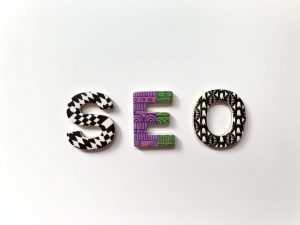I have a distinct memory in high school when one of my friends held up a wrapper that had the company’s website printed on it and we all thought it was so funny for a company to have a website. I mean, what was the point? Who was going to visit a company’s website?
Granted, this was way back in the 90’s when our understanding of the Internet was that it was only good for school research, instant messaging with friends, and downloading all the music you could ever want from Napster (sorry, not sorry, Metallica!) Little did I know we were about to experience a huge shift in how businesses would market their products and services.
One result of this shift is the growing importance of search engine optimization, or SEO. Another result is increased competition because the barrier to entry, to create a website, is now so low.
It’s a lot like the running boom in the 70’s. In 1970, the first New York City marathon had a whopping 127 registrants. In recent years, there have been more than 50,000 finishers!
To put that into perspective, even if I came in dead last in 1970, I would have placed 127th. To place 127th now, I’d need to be among some of the best marathon runners in the world.
And that brings me to the first key takeaway in this article…
SEO Gets Harder Every Day
Ranking on the first page of Google gets harder and harder every day. Just like how it’s harder to rank among the top 100 marathoners simply because there are so many more competitors today than there were decades ago.
That’s the bad news.
The good news is that just because more businesses have websites doesn’t mean they are all actually competing in SEO. Sure, they are “in the race,” but in my experience auditing hundreds of client websites, the majority of businesses aren’t really “in the race.”
Bear with me because I’m about to reveal the second key takeaway…
The Difference Between Running and Racing
 Since 2011, I’ve completed 9 marathons, but if I’m honest with myself, I’ve only raced 2 of them. The other 7 I was just trying to finish. I didn’t realize this until after I trained for racing a marathon and then actually raced one. The difference is night and day. This was a huge revelation for me and it parallels how I see most businesses approaching SEO.
Since 2011, I’ve completed 9 marathons, but if I’m honest with myself, I’ve only raced 2 of them. The other 7 I was just trying to finish. I didn’t realize this until after I trained for racing a marathon and then actually raced one. The difference is night and day. This was a huge revelation for me and it parallels how I see most businesses approaching SEO.
The most obvious difference is the sheer volume of running it takes to race a marathon. If you want to just finish, then 25 to 30 miles per week is enough. Heck, I’ve even heard of people who didn’t train much at all and they still managed to cross the finish line.
But if you want to race, then you’ll need to get up to 50+ miles per week. That’s just what it takes to get your body prepared for 26.2 miles of running hard the entire course.
With SEO, as I said earlier, a lot of businesses simply can’t compete because they aren’t investing enough time and resources. It’s the equivalent of running 25 miles per week and thinking you’re training hard. Without running more miles each week, the result is that you’ll hit what’s called “the wall” around mile 20 and you’ll be shuffling or walking or some combination of both for the next 6.2 miles.
Same is true with SEO. Without enough resources invested, you’ll hit “the wall” and never get on to the first page.
Intuitively that makes sense, but the next logical question is, “Where should you invest your resources?”
Great question! Let’s take a look…
Variation Keeps You Healthy
 I’ve studied training programs for several professional marathoners and, in addition to higher weekly mileage, they vary their workouts day-to-day and week-to-week. One day they’ll focus on speed, the next day they’ll slow way down and focus on recovery, then the next day they’ll focus on endurance, and on and on they go with different types of workouts designed to improve one area that’s important for running marathons.
I’ve studied training programs for several professional marathoners and, in addition to higher weekly mileage, they vary their workouts day-to-day and week-to-week. One day they’ll focus on speed, the next day they’ll slow way down and focus on recovery, then the next day they’ll focus on endurance, and on and on they go with different types of workouts designed to improve one area that’s important for running marathons.
Studies have shown that alternating different types of hard workouts and recovery is the recipe for success with marathon training. Alternatively, overly focusing on one area like speed or endurance is the recipe for injury.
And the same can be said about success with SEO – you must use a mix of tactics, such as meta tag edits, website structure, site speed, schema, mobile optimization, content development, outreach, guest blogging, citations, online reviews, and so on. Overly focusing on just one area at the expense of the others will not likely lead to positive results.
There’s one last takeaway before we conclude…
Injuries Are Inevitable
 Research has shown that up to 50% of runners get injured each year. The reality is that if you’re pushing your body, you’ll inevitably wind up injured at some point.
Research has shown that up to 50% of runners get injured each year. The reality is that if you’re pushing your body, you’ll inevitably wind up injured at some point.
With SEO, drops in keyword rankings are also inevitable. When this happens, it’s important to assess the “injury” and determine the root cause. Have you taken your foot off the pedal with blogging? Have you ignored online reviews recently and let the door open for a competitor to sneak in?
Once you determine the root cause, then it’s time to start rehabbing. As long as you’re serious about your SEO and willing to put in the work, then there’s no “injury” you can’t overcome. It just takes dedication and a little bit of patience.
By now, I hope it’s clear what it takes to be successful with SEO…

